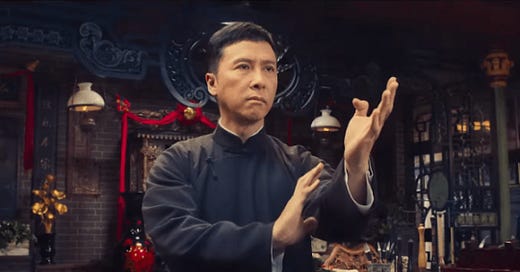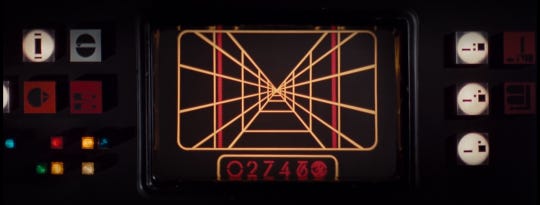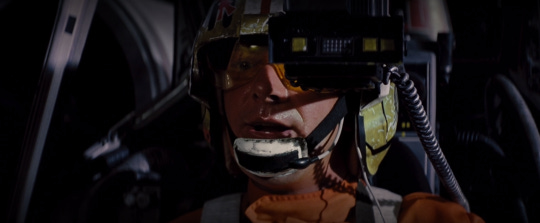Rogue One feels like classic Star Wars
Rogue One might be the only film since the original trilogy that really understood what, exactly, Star Wars was before it was Star Wars Episode IV: A New Hope. (It’s entirely possible that it didn’t understand these things and just stumbled onto it accidentally, but I’d like to give the moviemakers credit: it’s hard for this many things to go accidentally right.)
Star Wars, as it was released in 1977, was an attempt to science fiction with three other classic film genres:
Westerns
Samurai movies
World War II movies
Everyone sort of understands that Star Wars is a space western (even if you forgot this fact, the recent release of the Mandalorian should have served as a good reminder), and most people get that the Jedi are space samurai. (They have a strict honor code, and at least in the early episodes they held their lightsabers with both hands like a samurai, rather than holding them in one hand like a European medieval arming sword that was meant to be held with one hand while you held a shield with your other hand.)
However, I think nearly everyone has forgotten the reason that the first 1977 movie was simply titled “Star Wars.” Most Star Wars movies since the original (even Empire and Return of the Jedi) have a third-act action climax that is resolved through some confrontation involving a lightsaber.
Luke didn’t have a lightsaber duel with anyone in the first movie. Instead, he gets together with a bunch of his fighter pilot buddies for a dogfight in space. Luke’s big climactic third act victory is not winning a lightsaber fight, but being the last remaining pilot and, guided by the words of the wise Obi-wan, he trusts in the force and his instincts as a pilot in order to blow up the enemy dam death star. And you can’t have an air squadron without ground support, which we frequently cut to on both sides.
“Enemy fighters coming your way.”
We remember the glory and triumph of Luke’s victory. What fewer people seem to remember is that the rebel squadrons were getting picked apart and the battle was nearly lost before Han Solo came in and played a critical role in helping Luke save the day. It is dogfighting in space, using the same language as the World War II cinema that came before it, something that becomes apparent if you look at how the scene is shot: we don’t see just ships from a distance as they blow up in space in a grand spectacle of effects, we see shots of the pilots inside of their cockpits.
The Dam Busters (1955)
Star Wars (1977)
This is a war being fought by individual airmen. They might not have fleshed out backstories, but the mustached Red Three is distinct from the bearded and portly Red Six who is distinct from the clean-shaven Red Ten.
The movie makes a point of introducing us to Luke’s squadmates before they fly into battle: we have a roll call so that everyone can report in. These aren’t just faceless characters: we’re given their callsigns and each of them gets multiple shots that clearly focus on their faces so that we get to know them as individuals before they fly into battle. When an x-wing goes down goes down, we see the pilot reacting inside of his fighter before we cut to the view from space that shows the ship exploding into pieces.
Luke actually gets a very small portion of the screen time during the rebel run on the death star, and when he does, nearly every line of dialog he speaks reinforces the fact that he is part of a team. “Blast it, Biggs, where are you?” “Thanks, Wedge. Good shooting.”
Even in the climactic battle, the movie doesn’t forget one of the most important thing about war, which is that it’s a process that is approximately 1% sheer adrenaline-pounding terror, and 99% grisly anticipation as you wait for things to happen. Individual battles are a microcosm of this: your agency is limited, and you spend a lot of time waiting on things that are completely outside your control.
Something you might have forgotten from that movie: Luke’s squadron was not tasked with making the first trench run. Their job was simply to draw fire, making strafing runs on the enemy’s stationary guns while the gold squadron made the first attack run to try to blow up the death star. The first shot we see of the trench comes from the gold squadron’s perspective.
There’s a moment of sheer terror during the trench run when the death star’s stationary guns stop firing on them. Why would they stop firing on us? Answer: because the empire doesn’t want to hit their own ships. The question doesn’t even need to be asked; the pilots immediately realize as the stationary guns stop that the empire must have ships on their tail, and immediately give the order to stabilize rear deflectors and watch for ships on their tail. Including a face that you might recognize.
Darth Vadar has scarier weapons at his disposal than a mere laser sword. A lightsaber can remove your arm from your torso, but his TIE fighter can remove your pilot friends from the skies. Of course, even the terrifying Darth Vadar can’t fly solo: he, too, is part of an army, just one of several TIE fighters who are on their tail.
The Rebels’ first trench run ends in loss and failure as the gold squadron of Y-wings is picked off, one by one. They have to regroup and come up with a new plan: Red leader will make the trench run with the help of Red Ten and Red Twelve, with Luke, Wedge, and Biggs flying support.
“Just hold them off for a few seconds. Almost there…”
During the final moments of the second trench run, the tension is so thick that the pilot’s face is wet with sweat.
The second trench run scores a hit! But…wait, the death star suffers a shock, yet is still standing? “Negative, negative. It didn’t go in.” The look on everyone’s face is pure devastation.
The Rebels have only one remaining contingency: with Red Ten and Red Twelve gone, it falls on Luke to lead the third trench run, with his old friend Biggs and his new friend Wedge joining him. But their final attempt seems futile: during the first two trench runs, they had been the ones providing support. With Luke, Wedge, and Biggs all down in the trench, who will fly support for them and take care of the TIE fighters on their tail? What’s to stop Darth Vadar from following right behind them and picking them to pieces, just like he already did to the other Rebel pilots? And indeed, he and the other TIE fighters start to do exactly that. “We can’t hold them.” They’re on the precipice of defeat. The John Williams score turns from optimistic and hopeful to to dark and despairing. After several shots on his fellow pilots, Luke is the only one remaining in the trench, and we watch in horror as Darth Vadar lines up the shot on Luke, the one remaining Rebel fighter.
“I have you now.”
Red Five, the man we know as Luke Skywalker, is the Rebels’ last remaining hope, and with no support to cover his tail, he is dead to rights. This is a battle that he can’t win alone. In order for this to work, they need a miracle. And indeed, a miracle comes, in the form of a scruffy-looking nerfherder who we thought abandoned them at the end of the second act.
“You’re all clear, kid! Now let’s blow this thing and go home!”
In the prequel movies, the Jedi seem like invincible warriors. Their lightsabers cut through battle droids like hot knives through butter. They make it look easy. But when Luke and Han are recognized as heroes, it’s not because what they did was easy. It’s because what they did was hard. They survived incredible danger. Their companions made incredible sacrifices. And in the day, their side won the battle at an incredible cost.
This is what Star Wars was about. By the end of the original trilogy, it had become something else: a heroic epic about a boy with a special gift who was part of a grand legacy. That is the legacy that is carried forward into the other parts of what is now known as “The Skywalker Saga.” But in 1977, Luke was the farm boy with a knack for piloting who joined the Rebel army and won the war. Sure, he had adventures along the way, and he even was in touch with the force, but this was the third act climax: dogfights in space.
In my mind, Rogue One is the only other Star Wars movie to even try to do anything close to this. There’s a moment some time during the third act when every viewer realizes, “Oh wow, this is actually how things are going down. This isn’t a heroic epic; this is a war movie. I suddenly know how this movie is going to end, and yet I can’t believe they’re really doing this. Are they really going to let a Star Wars movie end like this?”
Of course, Rogue One echoes the original not just in the fact that it is a war film, but that it is a cocktail blend of several genres. Star Wars (1977) pulls influence from war films, samurai films, and westerns. Rogue One pulls influence from war films, Hong Kong martial arts films, and heist movies, replacing the outlaws of the frontier with the outlaws of the heist movie, and replacing the laser sword-wielding space samurai Jedi with a force-sensitive monk played by Donnie Yen, who you might remember from many martial arts movies, including Ip Man.
Whether it was by intention or happy accident, Rogue One might be the Star Wars movie that is best at making me feel the same way I did the first time I watched the 1977 movie that released under the title Star Wars.














